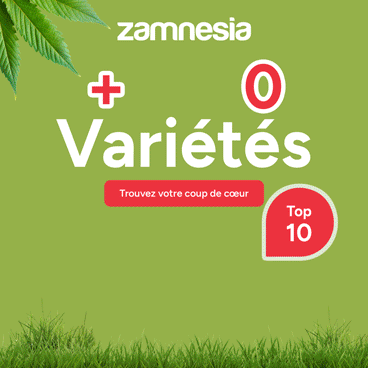Hopar Valley ’23 Selection #4
élevé par Indian Landrace ExchangeIci vous pouvez trouver toutes les informations sur Hopar Valley ’23 Selection #4 de Indian Landrace Exchange. Si vous recherchez des informations sur Hopar Valley ’23 Selection #4 à partir de Indian Landrace Exchange, consultez notre : Informations de base, Galerie, Dégustation, Trophées, Recensions, Comparaisons Directes, Lignée / Généalogie, Hybrides / Croisés, Commentaires de l'utilisateur, pour cette variété de cannabis ici sur cette page et suivez les liens pour obtenir encore plus d'informations. Si vous avez des expériences personnelles avec la culture ou la consommation de cette variété de cannabis, veuillez utiliser les télécharger des liens pour les télécharger dans la base de données!
Informations de base
Hopar Valley ’23 Selection #4 is an indica from Indian Landrace Exchange et peut être cultivé indoors, outdoors and greenhouse (Là où les plantes auront besoin d'une période de floraison de ±60 jours) Indian Landrace Exchange Hopar Valley ’23 Selection #4 n'est/n'a jamais été disponible en graines féminisées.
Description de Indian Landrace Exchange
Good yielding selection with intense purple colors from the Hopar Valley in Gilgit Baltistan, northern Pakistan. It features terpenes reminiscent of fresh pine paint thinner and mothballs. It has a short and closed structure with moderate lateral branching, completing its maturation in 8-9 weeks. The growing season spans from April/May to early October, when it is harvested to produce resin.
Hopar Valley is a small bowl valley located at the toes of the Spantik and Hopar glacier. The indigenous population in Gilgit-Baltistan is known as “Balti” majority of whom are shia Muslims.
The cannabis cultivation in Hopar Valley has shrunk significantly in past 3-4 decades from being prolific to cannabis being a secondary crop which is now sown on the sides/periphery of the fields meant for growing food. Unlike, some of the other cannabis hotspots in northern pakistan like chitral, that saw an increasingly stringent attitude of the administration on Cannabis, Hopar Valley in the wake of rapidly increasing tourism had an entirely different reason for slowing down the cultivation of cannabis so, Cannabis can still be easily seen growing on sides of the roads in the entire valley, without a shred of worry.
In Hoper Valley, particularly, we observed that the farmers don’t plant cannabis as the main crop but every farmer plants the cannabis seeds as a side crop all along the fences of their fields reserved for their main crops like potatoes. As per the local farmers, they make exceptionally good use of the cannabis plant, by using the resin, the seeds for making traditional soups and the stems/stalks for burning to generate the life giving heat in the winter months.
The cannabis varieties which are adapted to such extremely cold weather conditions, embody certain features overtime, which are integral to the survival and the subsequent reproduction of the plant. These adaptations are typical and seen in plenty amongst the larger populations, Since, it’s these fine changes over the long periods of time that ultimately makes it conducive for the populations to thrive.
The first few adaptations which are quite apparent and can be subjectively appreciated in this valley, are the profuse anthocyanins production on the bracts only but not as often on the leaves itself and the relatively bigger size of the trichomes with a clearly more dense coverage as well.
The typical embodiment seen amongst the cannabis populations in the Valley is that of a semi-tall plant with moderate side branching, broad leaflets and fibrous stalk and stems similar to cannabis varieties domesticated in subtropical Highlands around 29-32°N (e.g. Malana, Uttrakhand, Nepal) but Hopar Valley being located at a Much higher latitude (36°N) have both lesser insolation (sun lit hours) and season length hence the plants in Hopar Valley have broader leaflets to absorb sufficient sunlight in shorter days and the plants also flower faster to finish before the onset of the snowfall. The plants at the most get 7-8 ft tall with much of the population staying under 6ft.
A lot of plants are also seen expressing vibrant colors mostly on the floral bracts, while some also showing anthocyanins production in leaves and the bracts alike. In fact there seems tobe a good proportion of plants expressing red/Purple coloration on the bracts with contrasting green leaves, within the larger domesticated population of Hopar Valley.
The un domesticated cannabis population in the Hopar Valley is distinctly different from the fully domesticated ones. E.g. plants from the un domesticated populations clearly show lesser vigor, sporting spindly stems instead of thick upright stalks as seen in domesticated populations here and the wilder genotypes also exhibits some of the typical characteristics seen amongst the wild or un domesticated Landrace populations of Cannabis such as shorter bract life to self disperse the seeds as shown in the picture below.
However, certain traits which are integral to the survival of the organism in this harsh terroir could be seen amongst both populations invariably, such as bigger sized trichomes can still be seen throughout every single plant in the valley be it domesticated or wild. It’s also, noteworthy that the smell found in these plants were a lot more intense in comparison to possibly any other known landrace variety encountered yet. The shear density of the resin glands on the flowers was outstanding in majority of the cases and the bigger size of those glands only seems to further aid in being able to produce and store higher volumes of (secondary metabolites) cannabinoids and terpenes.
Type: FIRST GENERATION (P1) LANDRACE STRAIN
Format: Regular
Sativa / Indica ratio: 100 % indica
Flowering outdoors: Early October.
Yield: High
Resistance against spider mites: Average
Resistance against powder mildew: Average
Resistance against botrytis: Average
Resistance against white fly: Average-High
Resistance against cold: High
Resistance against heat: High
Latitude: 0º-50º
Critiques sur Hopar Valley ’23 Selection #4
Dégustation de Hopar Valley ’23 Selection #4
Effet/Efficacité
Odeur / Arôme
Goût
Galerie Hopar Valley ’23 Selection #4
Aucune image n’a été téléchargée jusqu’à présent. Cliquez sur here pour en ajouter.Comparaisons Hopar Valley ’23 Selection #4
Comment pousse et agit Hopar Valley ’23 Selection #4 comparé à d'autres variétés ? 0 utilisateurs de Seedfinder ont téléchargé des comparaisons directes avec la variété Hopar Valley ’23 Selection #4 de Indian Landrace Exchange et l'ont comparée à 0 autres variétés de cannabis.
Indian Landrace Exchange Hopar Valley ’23 Selection #4:Hopar Valley ’23 Selection #4 Lignée / Généalogie
Hybrides & Croisements avec Hopar Valley ’23 Selection #4
Nous avons trouvé 0 descendants directs de Indian Landrace Exchange dans la base de données de seedfinder.eu, ici un bref aperçu. Pour voir tous les hybrides et leurs descendants, visitez notre Page Généalogie de Hopar Valley ’23 Selection #4 et découvrez tous les descendants directs, les croisements comme ceux des générations suivantes.
Hopar Valley ’23 Selection #4 Commentaires des utilisateurs
Ensemble, nous avons recueilli 0 à propos de Indian Landrace Exchange.Malheureusement aucun de ces commentaires n'est en fr !
Envoyez votre info sur cette variété ici:
Savez-vous quelque chose de plus sur Indian Landrace Exchange? Aidez s'il vous plaît à améliorer cette base de données et téléchargez / connectez vos informations ici!
Photos
Les images parlent plus que les mots ! Téléchargez vos photos "Hopar Valley ’23 Selection #4" ici et aidez les autres producteurs à avoir une meilleure impression de cette variété.Comparaisons
Hopar Valley ’23 Selection #4 VS. Formulaire de comparaison directe des déformationsRecension de Variété
Nos critiques de variétés sont multilingues, consultables et peuvent être très détaillées - y compris des données sur la culture, l'arôme, les effets et le goût ! S'il vous plaît téléchargez votre avis Hopar Valley ’23 Selection #4 ici pour aider les autres utilisateurs de Seedfinder !
Valeurs Pharmaceutiques
Avez-vous de l'expérience avec les qualités médicales de Hopar Valley ’23 Selection #4 ? Partager vos informations ici peut peut-être aider d'autres personnes !
Sujets
Vous êtes tombé sur une discussion liée à Hopar Valley ’23 Selection #4 dans un forum ou une communauté de producteurs ? Connectez-le ici et permettez aux autres utilisateurs de trouver ces informations rapidement et facilement !
Vidéos
Vous avez trouvé une vidéo connexe contenant des informations supplémentaires ou des informations sur la croissance de Hopar Valley ’23 Selection #4 sur YouTube ? Veuillez le connecter ici à la page d'informations sur la variété !



